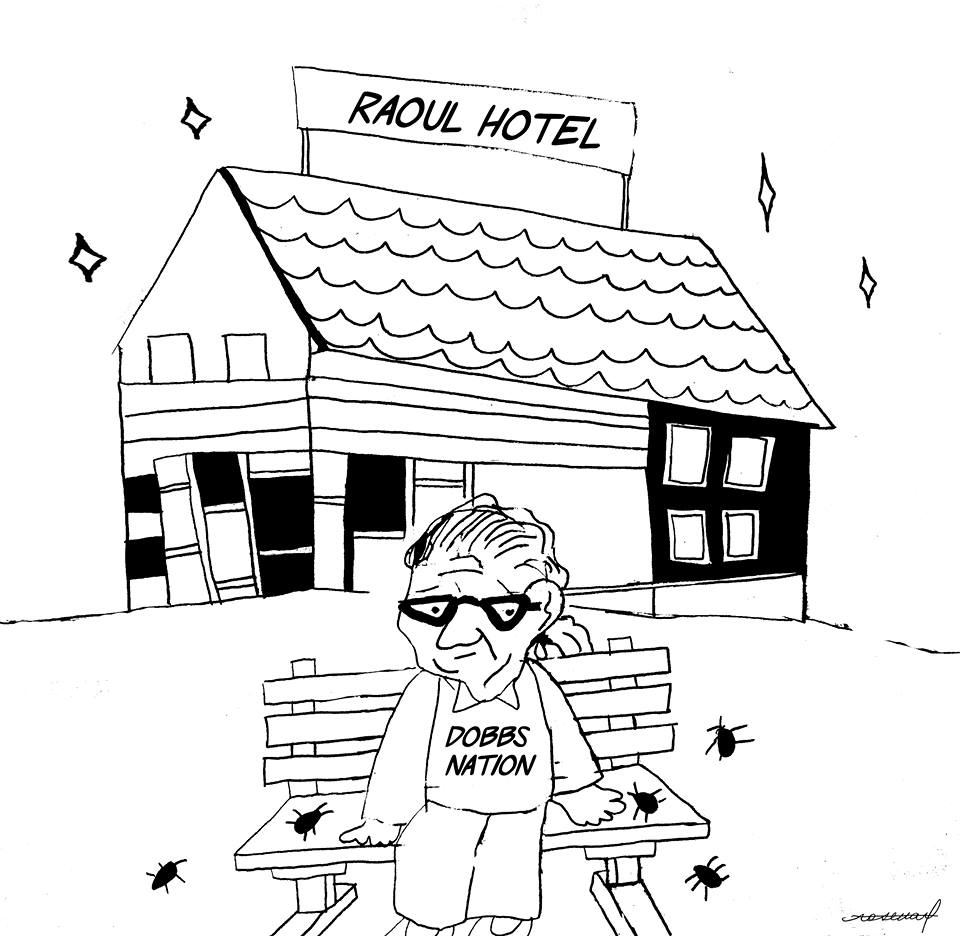Rose Kuan/Contributing
On freshman move-in day a year ago, I was thrilled with my double room in Dobbs Hall. It was so college. Reflecting on my older siblings’ dorm rooms, I was in no way disappointed by the room. Even when I spent nights in what felt like mansions in Raoul Hall, I harbored no hard feelings toward Dobbs. However, throughout the year, the growth of my resentment for Dobbs paralleled the growth of a black mold colony in my room. Allergic reactions are the most common health risks associated with exposure to mold, a recurring problem in Dobbs that resulted in the relocation of at least four students to another dorm last year. In 2004, the Institute of Medicine found evidence that linked indoor exposure to mold with upper respiratory tract symptoms (cough and wheezing) in otherwise healthy individuals. The Institute of Medicine also found links between exposure to mold and worsening asthma symptoms in individuals that suffer from asthma and hypersensitivity pneumonitis in individuals susceptible to the condition. Certain types of mold can produce toxins known as mycotoxins that can irritate the skin and airways, and severe reactions to mold exposure may result in fever and difficulty breathing. While Emory Housing made efforts to improve air quality over winter break by installing vents and thoroughly cleaning air conditioning units, the existence of mold in several rooms without its successful removal for several weeks is enough to raise concerns about the habitability of Dobbs. The living spaces we occupy play an integral part in our lives. School performance can be negatively impacted by the state of our dorm rooms. In this arena, some students, Dobbs residents in particular, are at a disadvantage compared to other freshmen. Don’t get me wrong — dorm rooms at many other schools pale in comparison to the options at Emory. However, in an effort to create a semblance of equality for students at Emory, especially when students in significantly larger and newer dorms pay the same rate for housing, Dobbs as one of the eight freshmen housing options needs be reevaluated. Right down to the numbers, Dobbs is significantly smaller than each of the other housing options. According to Emory Housing, the advertised room dimensions of a double in Dobbs is 11 feet 6 inches by 14 feet 5 inches, including the sink, while the room dimensions of a double room in Raoul are 11 feet 6 inches by 16 feet 2.5 inches, excluding the sink. Though these measurements may sound trivial, an almost two-foot discrepancy adds up to more than 186 square feet of additional living space for those in Raoul. The fact that Dobbs residents pay the same price as those in more spacious dorms is clearly unfair. Despite all that evidence, I still have a soft spot in my heart for Dobbs. I met some of my best friends there. I experienced firsthand the superior “community” that Emory claims Dobbs has. The central location made my 8:30 a.m. classes a little more tolerable, and my lack of a comfortable space possibly contributed to my tendency to study at the library at ungodly hours of the night. Some schools, like Washington University in St. Louis (Mo.), allow students to choose their fate in the residence hall process. Rather than being randomly assigned to a “themed community,” students can choose whether they want to live in a “modern” or “traditional” dorm. The former choice is more luxurious and also costs around $720 more, so students can willingly elect to pay more for a newly-renovated living arrangement. While WashU system may be advantageous for their students who don’t see the necessity to spend the steep $10,670 for a “modern” dorm, this system of self-selection leads to freshman residence halls that are divided by class — the direct opposite of the idealistic freshman dorm experience, which aims to set the foundation of the collegiate experience and build lifelong friendships with individuals of all backgrounds. But to make Emory’s freshman housing a fair and equal system while promoting these community values, it would be more fitting to continue to randomly sort students into dorms but charge students placed in Dobbs a lower housing rate. Emory should address this issue for future freshmen classes by offering another building for housing, whether it be a current building or a newly constructed one. Better yet, maybe it’s time to let this piece of history be just that — history. Dobbs is unsuitable to remain a living space for students and would truly better serve our campus and our freshmen if it were converted into a space for administration or admissions.Jennifer Katz is a College sophomore from Maplewood, New Jersey.





